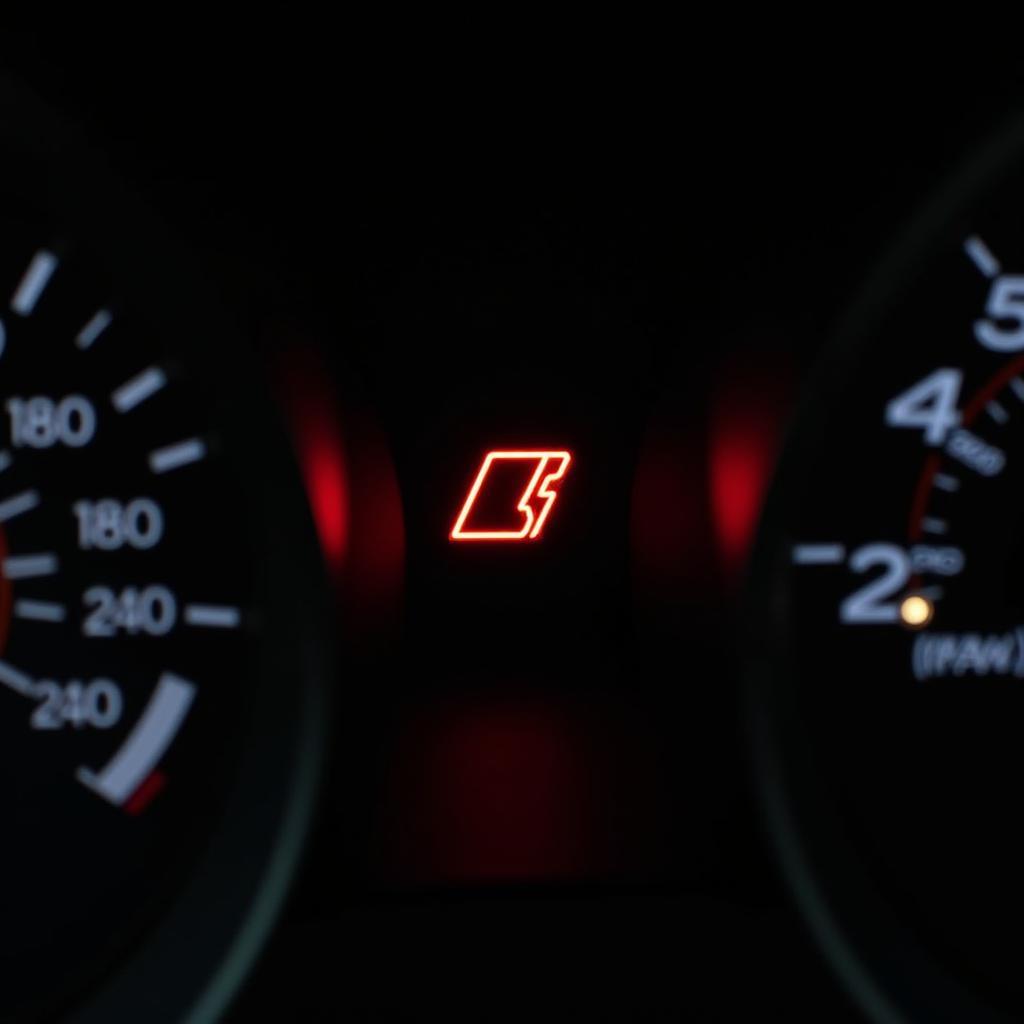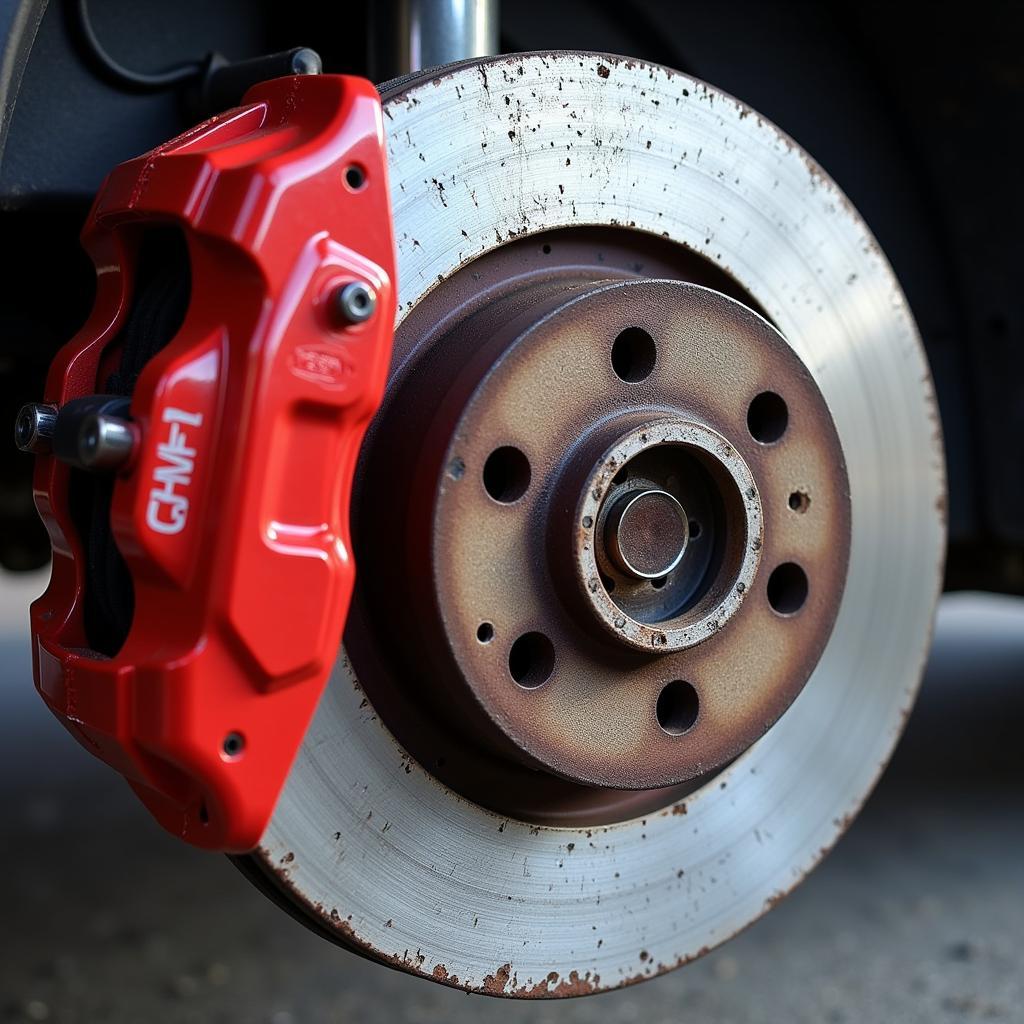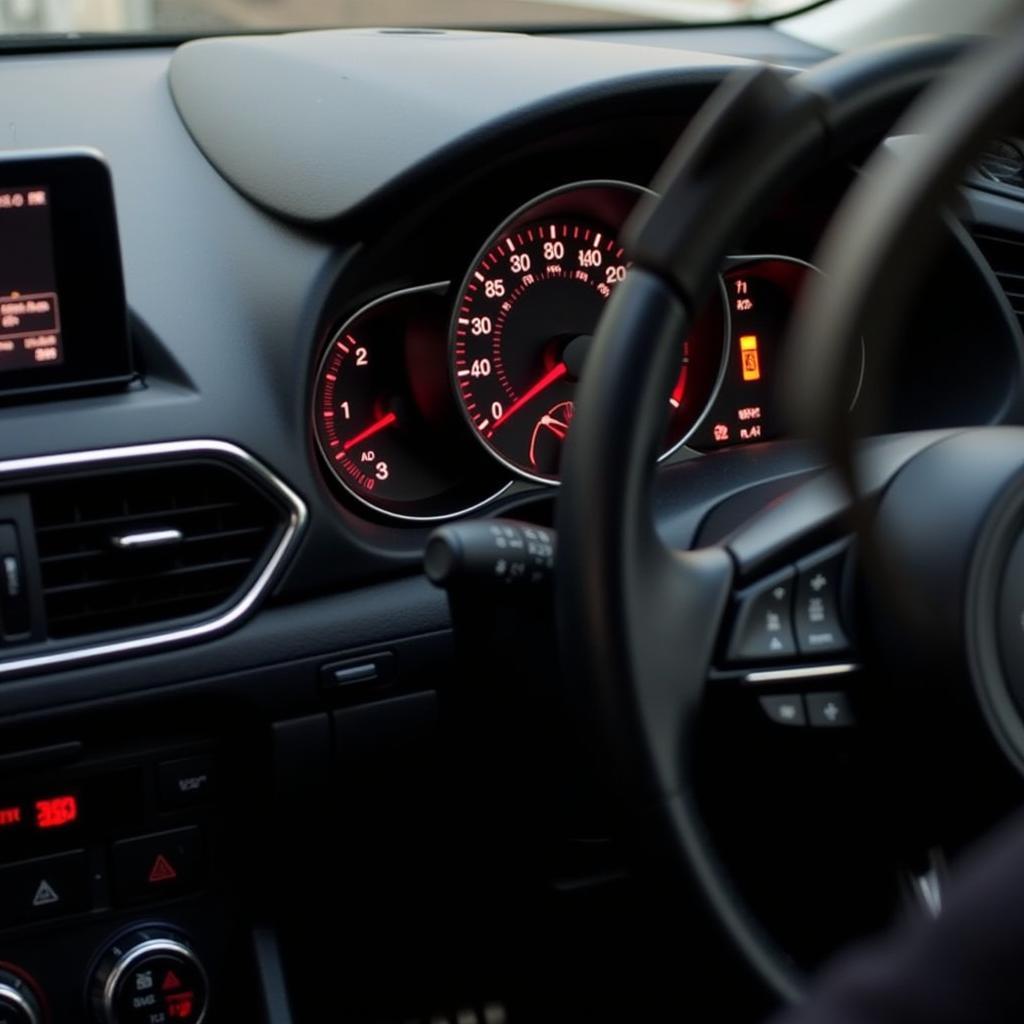The dreaded brake warning light on your BMW 1 Series dashboard can be a nerve-wracking experience. Is it a minor glitch or a sign of major brake failure? This comprehensive guide will walk you through the common causes of the BMW 1 Series brake warning light and provide potential solutions to get you back on the road safely.
Decoding the BMW 1 Series Brake Warning Light
Before we delve into the specifics, it’s crucial to understand what your BMW is trying to tell you. The brake warning light can illuminate for several reasons, and knowing the difference can save you time and money.
- Solid Red Light: This typically indicates one of two things: either your parking brake is engaged (easily remedied!) or there’s an issue with your braking system that requires immediate attention.
- Flashing Red Light: This is a more serious warning, often accompanied by an audible chime. It signals a significant problem with your brake system, potentially a brake fluid leak or a malfunctioning component.
 BMW 1 Series dashboard with brake warning light illuminated
BMW 1 Series dashboard with brake warning light illuminated
Common Causes of a BMW 1 Series Brake Warning Light
Several culprits can trigger the brake warning light on your BMW 1 Series. Let’s explore the most common ones:
1. Low Brake Fluid
One of the most frequent reasons for the warning light is low brake fluid. Your brake system relies on hydraulic pressure to function correctly. When the brake fluid level drops, usually due to a leak, this pressure is compromised, triggering the warning light.
2. Worn Brake Pads
Brake pads are designed to wear down over time. As they wear thin, the brake pad sensor will make contact with the brake rotor, activating the warning light to signal that it’s time for a replacement.
3. Faulty Brake Pad Sensor
While less common, the brake pad sensor itself can malfunction. If the sensor is damaged or sending incorrect signals, it can trigger the warning light even if your brake pads are in good condition.
 Worn brake pads on a BMW 1 Series
Worn brake pads on a BMW 1 Series
4. ABS Issues
Your BMW 1 Series is equipped with an Anti-lock Braking System (ABS). If the ABS module encounters a problem, such as a faulty wheel speed sensor, it can illuminate the brake warning light.
5. Brake Fluid Leak
A brake fluid leak is a serious issue that demands immediate attention. If you notice a puddle of fluid under your car, especially if it has a light brown color and an oily texture, it could be a brake fluid leak.
What to Do When Your Brake Warning Light Turns On
Seeing the brake warning light can be stressful, but it’s crucial to react calmly and safely:
-
Safely pull over: As soon as it’s safe, pull your vehicle off the road and come to a complete stop.
-
Check your parking brake: Ensure your parking brake isn’t engaged. If it is, release it and see if the light turns off.
-
Consult your owner’s manual: Your BMW owner’s manual provides specific information on warning lights and recommended actions.
-
Inspect the brake fluid level: If you’re comfortable doing so, carefully check the brake fluid level in the reservoir. Refer to your owner’s manual for its location.
-
Contact a professional: If the light persists, or if you suspect a leak or other serious issue, it’s best to contact a qualified mechanic specializing in BMWs. Continuing to drive with a brake warning light can be dangerous.
 Checking the brake fluid level on a BMW 1 Series
Checking the brake fluid level on a BMW 1 Series
Remote Diagnostics and Programming: A Modern Solution
In our increasingly digital world, remote diagnostics and programming offer a convenient and efficient way to address car issues, including those indicated by your BMW 1 Series brake warning light. Specialized technicians can remotely connect to your vehicle’s computer system to:
- Read fault codes: Retrieve diagnostic trouble codes (DTCs) stored in your car’s computer, pinpointing the root cause of the warning light.
- Analyze data: Evaluate real-time data from various sensors to gain deeper insights into your braking system’s health.
- Perform software updates: Install the latest software updates for your car’s braking system, potentially resolving software-related glitches.
Preventing Future Brake Warning Light Issues
While some issues are unavoidable, you can take proactive steps to maintain your BMW 1 Series brake system and minimize the chances of encountering the brake warning light:
- Regular maintenance: Adhere to your BMW’s recommended maintenance schedule, including brake fluid flushes, brake pad replacements, and inspections.
- Quality parts: Always opt for genuine BMW parts or reputable aftermarket alternatives to ensure compatibility and optimal performance.
- Mindful driving: Aggressive driving habits, such as hard braking, can accelerate brake wear. Adopt smoother driving techniques to prolong the lifespan of your brakes.
Conclusion
The brake warning light on your BMW 1 Series should never be ignored. By understanding its potential causes and taking appropriate action, you can ensure your safety and keep your BMW performing at its best. Remember, when in doubt, seek professional assistance from a qualified BMW mechanic or explore the benefits of remote diagnostics and programming for a swift and convenient solution.
FAQs about BMW 1 Series Brake Warning Light
1. Can I drive my BMW 1 Series with the brake warning light on?
It’s not advisable to drive with the brake warning light on. It indicates a potential issue with your braking system, and continuing to drive could be dangerous.
2. How much does it cost to fix a BMW 1 Series brake warning light?
The cost can vary greatly depending on the underlying cause. A simple brake pad replacement will be significantly cheaper than repairing a brake fluid leak or replacing a faulty ABS module.
3. How often should I change my BMW 1 Series brake fluid?
BMW generally recommends a brake fluid flush every 2 years or as specified in your owner’s manual.
4. Can I check the brake fluid level myself?
Yes, you can check the brake fluid level in the reservoir. Consult your owner’s manual for the location and instructions.
5. What is the difference between the brake warning light and the ABS light?
While both relate to your braking system, the brake warning light typically signals issues with the hydraulic braking system, while the ABS light indicates a problem with the Anti-lock Braking System. However, in some cases, the brake warning light may illuminate for ABS issues as well.

